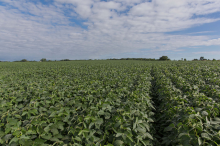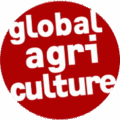
The global area planted with genetically modified crops has decreased for the first time since the commercial introduction of GM crops in 1996. The worldwide acreage reached 179.7 million hectares in 2015, down by one per cent from 181.5 million hectares in 2014. These figures were published on April 13 by the GMO-friendly organisation “International Service for the Acquisition of Agri-Biotech Applications (ISAAA)”. According to their annual report, the main reason for the drop was a reduction in total plantings of maize and cotton, two of the main GM crops, driven by low commodity prices. The organisation argues that this caused farmers to switch to other less demanding crops like pulses, sunflower and sorghum. The report highlights that the global hectarage of GM crops has increased 100-fold over the past 20 years. But a comparison of the organisation’s annual reports shows that year-to-year growth has slowed down recently. Following years of double-digit growth, in 2012, the global hectareage of GM crops only increased by 6 per cent compared to the previous year. In 2014, it only increased by 3.6 per cent. The cultivation of genetically modified crops is still concentrated in just a few countries. The US is the leading producer with 70.9 million hectares or 39 per cent of the global area. Brazil ranks second with 44.2 million hectares, followed by Argentina with 24.5 million hectares. India ranked fourth with 11.6 million hectares and Canada was fifth at 11.0 million hectares. Other GM producing countries include China, Paraguay, Pakistan, South Africa and Uruguay. Genetic modification is still largely restricted to four main crops: Soybeans are grown on half of the area planted with GM crops, followed by maize, cotton and rapeseed. Insect resistance and herbicide tolerance are the only two traits that have been developed and cultivated on a large scale. 53 per cent of GM crops grown in 2015 were herbicide tolerant, 14 per cent were insect resistant and 33 per cent had a combination of both traits. The report states that genetically modified crops were grown in 2015 by up to 18 million farmers, 90 per cent of which were resource-poor small-scale farmers in developing countries. This has helped alleviate hunger and poverty for up to 16.5 million small farmers and their families annually totaling about 65 million people – at least according to ISAAA, which is sponsored by agrochemical giant Monsanto and CropLife International, the association of agricultural biotechnology companies. According to the FAO, the global agricultural area amounts to 4.9 billion hectares and arable land to 1.4 billion hectares. This means that the 179.9 million hectares planted with GM crops in 2015, as stated by the ISAAA, only make up roughly 3.6% of the total agricultural area and 13% of arable land. (ab)
